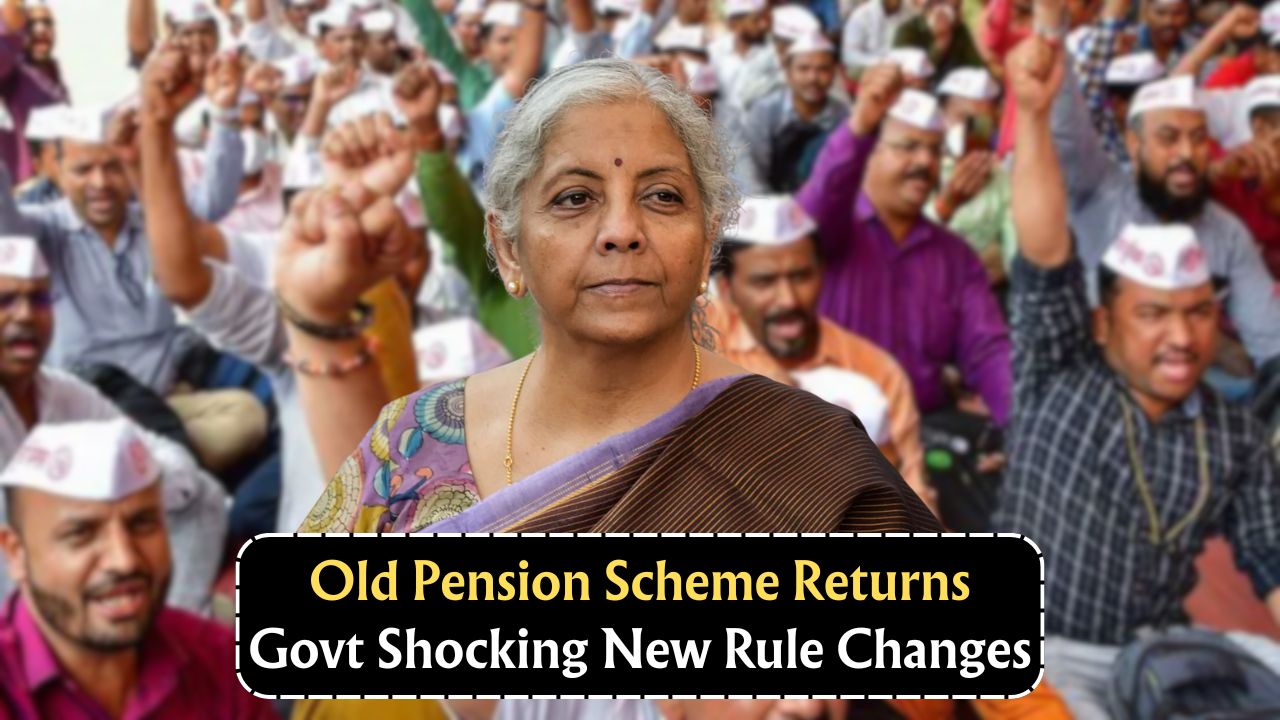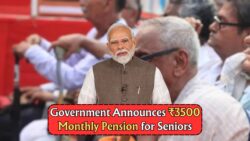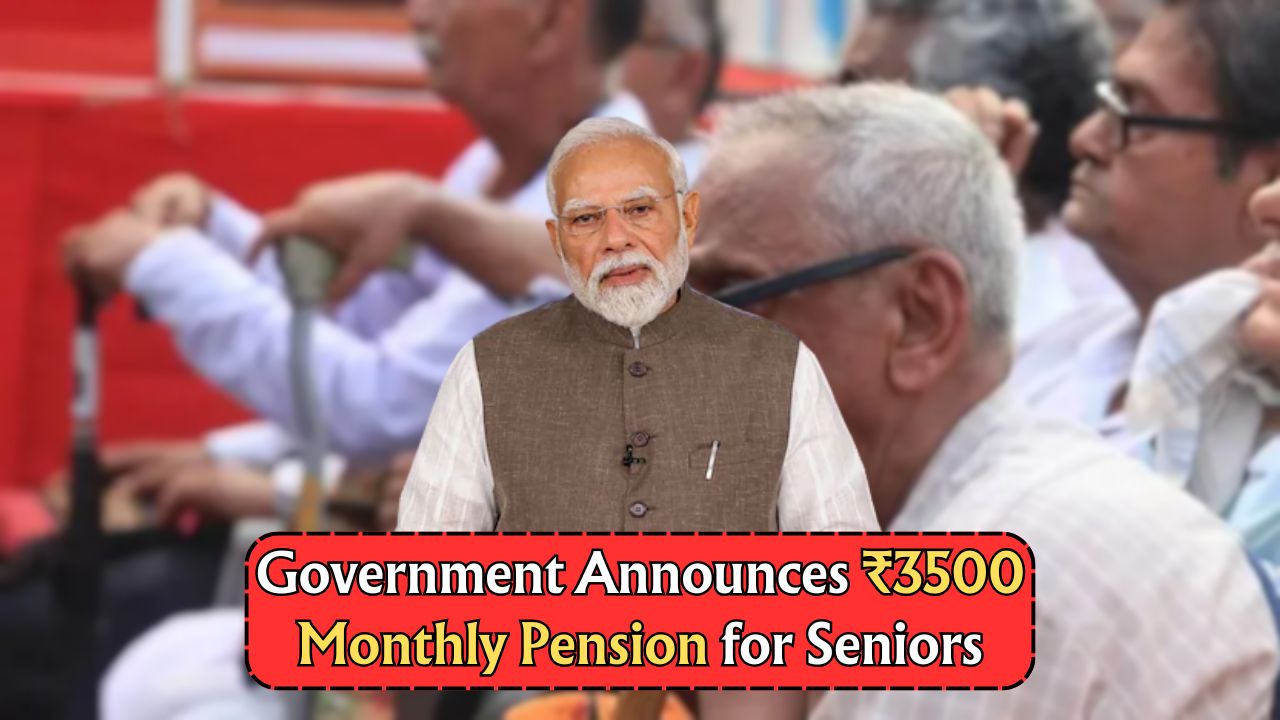Old Pension Scheme – In a significant development that could redefine the future of lakhs of government employees, the Indian government has introduced crucial changes to the retirement policy, especially concerning the Old Pension Scheme (OPS). These amendments aim to provide better post-retirement security and greater clarity on eligibility and benefits. With growing demands from employee unions and political discussions surrounding the OPS vs. NPS debate, these recent updates could be a turning point. This article gives you a detailed overview of the latest rules, eligibility revisions, payout structures, and how these changes impact both current and future government employees. If you’re a central or state government employee or planning to join the public sector, understanding these new amendments is essential.
Key Highlights of the New Old Pension Scheme Amendments
The government has proposed structural revisions to revive and expand the scope of OPS. Here’s a snapshot of the most important changes introduced under the updated policy.
- Employees recruited before December 31, 2003, remain eligible for OPS by default.
- States such as Rajasthan, Punjab, Chhattisgarh, Himachal Pradesh, and Jharkhand have already restored OPS for their employees.
- A new cutoff date is under review for including select NPS employees into OPS.
- OPS payouts will now be linked to last drawn salary, offering 50% pension plus DA.
- Revised qualifying service years for full pension eligibility reduced from 20 to 10 years.
- Government to introduce a Voluntary Pension Option for eligible NPS workers.
- Arrears from 2020 likely to be cleared in phased manner.
- Central Government may soon issue uniform OPS guidelines for all states.
Comparison Table: Old Pension Scheme vs. New Pension Scheme
This table provides a direct comparison between the two retirement systems to help you understand which offers better security and value.
| Feature | Old Pension Scheme (OPS) | New Pension Scheme (NPS) |
|---|---|---|
| Type of Pension | Defined Benefit | Defined Contribution |
| Pension Amount Basis | Last drawn salary (50% + DA) | Depends on market returns |
| Eligibility Cut-off | Before Dec 31, 2003 (some states extended) | After Jan 1, 2004 |
| Government Contribution | 100% Government Funded | 10% Employee + 14% Govt |
| Market Risk | None | High |
| Gratuity Benefit | Yes (as per CCS Rules) | Yes (Limited under PFRDA) |
| Tax Benefits | Fully tax-free | Partial Exemptions |
| Minimum Service Years | 10 years (revised) | No minimum, but payout varies |
Major Changes in Retirement Age and Eligibility
The government is also considering amending the retirement age and linking it to life expectancy and sectoral requirements.
 Honda Activa 6G scooter launched at a dirt-cheap price, offers impressive mileage of 55 kmpl
Honda Activa 6G scooter launched at a dirt-cheap price, offers impressive mileage of 55 kmpl
- Retirement age under review to be extended from 60 to 62 years.
- Health and physical condition-based retirement for paramilitary and defense staff.
- Retirement-linked pension rights may now begin at 55 under voluntary retirement.
Eligibility Criteria Under Revised OPS
Revised OPS eligibility ensures more inclusiveness and benefits for those who missed out due to timing or technical lapses.
- Employees who joined service before 2004 but were mistakenly enrolled in NPS can apply for OPS migration.
- Special consideration for employees appointed on compassionate grounds.
- Women employees and those under special schemes (e.g. ex-servicemen quota) may be given extended OPS coverage.
- Required service period for pension claim lowered from 20 to 10 years.
Revised Pension Calculation Formula Under OPS
To ensure better financial security, the government has revised how OPS pension is calculated.
- Pension = 50% of Last Basic Pay + Applicable DA.
- Ceiling raised to ensure minimum pension does not fall below Rs 9,000/month.
- DA rate applicable as per latest pay commission slab.
Sample Pension Calculation Table
Here is a practical example of how your pension might look under the revised OPS model:
| Last Drawn Basic Pay | DA (%) | Monthly Pension (Approx.) |
|---|---|---|
| ₹50,000 | 46% | ₹73,000 |
| ₹40,000 | 46% | ₹58,400 |
| ₹35,000 | 46% | ₹51,100 |
| ₹30,000 | 46% | ₹43,800 |
| ₹25,000 | 46% | ₹36,500 |
| ₹20,000 | 46% | ₹29,200 |
| ₹18,000 | 46% | ₹26,280 |
| ₹15,000 | 46% | ₹21,900 |
OPS Reinstatement State-Wise Update
Several state governments have already notified the return of OPS for their staff. Here’s where things stand as of July 2025:
Status of OPS Reinstatement in States
| State | Status | Effective Date | Notes |
|---|---|---|---|
| Rajasthan | Reinstated | April 2022 | Covers all govt staff pre-2004 |
| Chhattisgarh | Reinstated | July 2022 | Migrated over 2 lakh employees |
| Punjab | Reinstated | Nov 2022 | Full implementation underway |
| Himachal Pradesh | Reinstated | March 2023 | Includes compassionate appointments |
| Jharkhand | Reinstated | June 2023 | Partial rollback announced |
| Kerala | Under Review | TBD | Opposition-led push for implementation |
| Delhi | Under Review | TBD | Awaiting central clearance |
| Maharashtra | Pending | TBD | Employee unions demanding immediate action |
OPS Migration Process for NPS Employees
A structured migration process will soon be available for eligible employees who want to switch from NPS to OPS.
- A dedicated online portal is expected to launch by August 2025.
- Documentation required: Service Joining Date Proof, Salary Slips, PF Records.
- Last date to apply for OPS switch may be fixed as 30 September 2025.
- Centralized verification team to handle disputes and anomalies.
- Employees already retired under NPS may not be eligible for retrospective benefits.
Migration Checklist for NPS Employees
To help employees navigate the transition smoothly, here’s what you need:
- Proof of employment before January 1, 2004
- Service records with no break exceeding 1 year
- Declaration form for opting into OPS
- NOC from department head
- Aadhar and PAN verification
- Grievance redressal via Central OPS Cell
Political and Economic Impact of OPS Revival
The revival of OPS has created ripples in political circles and fiscal planning departments due to its long-term implications.
- Estimated financial burden on states is over ₹1.8 lakh crore by 2035.
- Political parties are using OPS promises as election strategies.
- OPS seen as a vote-puller among middle-class and government families.
- NPS fund managers raising concerns over corpus withdrawal.
Government vs. Opposition Stand
| Political Group | Stand on OPS | Remarks |
|---|---|---|
| Central Govt (BJP) | Opposed, cautious | Prefers NPS for long-term sustainability |
| Congress | Pro-OPS | Implemented in multiple states |
| AAP | Mixed signals | Under review in Delhi |
| Left Parties | Strongly Pro-OPS | Demanding pan-India OPS law |
| Employee Unions | Pro-OPS | Regular protests & PILs filed |
The Old Pension Scheme amendments mark a major shift in the Indian government’s approach to employee welfare and retirement planning. With significant changes in eligibility, calculation, and migration policies, OPS is once again becoming a central point of discussion among public servants, economists, and political analysts. While the move brings relief and hope to many employees nearing retirement, its fiscal sustainability remains a concern. Government employees must stay informed, check their eligibility, and act within deadlines if they wish to take advantage of these updates. As more states fall in line and the central government prepares uniform guidelines, the retirement landscape in India may undergo a dramatic transformation in the coming months.
FAQs
1. Who is eligible for the revived Old Pension Scheme?
Employees who joined service before January 1, 2004, and meet other service-related criteria may be eligible. Some states are offering migration even for post-2004 employees under specific conditions.
2. Can I switch from NPS to OPS now?
Yes, if your joining date was before the cutoff and your department or state has allowed migration. You’ll need to apply online and submit documents by the deadline.
3. How much pension will I get under OPS?
Pension is calculated as 50% of your last basic salary plus the applicable DA. The minimum pension has also been increased to ₹9,000 per month.
4. Are all states implementing OPS?
Not all. Rajasthan, Chhattisgarh, Punjab, and a few others have fully implemented it. Others are still reviewing or opposing the change.
5. What is the financial impact of OPS on the government?
Reviving OPS could increase fiscal liability significantly, with projections crossing ₹1.8 lakh crore by 2035. This is a major concern for policymakers.









